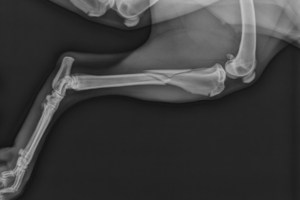Blurred lines: why hybrid models are the future of UK publishing

Bambos Eracleous, Partner and Head of the Sports, Media & Gaming Practice, discusses what the future publishing industry will look like
For much of the traditional publishing industry, the advent of the internet and its digital aftermath has been a major inconvenience. Far from being viewed as an opportunity, it has eroded revenue streams, toppled product lines that were widely assumed to be ‘ever-green’ and generally caused a level of disruption that hadn’t been felt since the arrival of the printing press. Only in the past few years has the industry truly begun to adapt. Market leaders now view print and digital as two sides of the same coin; they are challenging the traditional perception of content and instead are using it as a highly versatile product that can be commoditised though any number of physical or digital routes to market.
Monetising the digital medium has been the biggest challenge for the industry to overcome. A publisher with a portfolio of local newspapers may sell 30,000 print copies in one area, yet their online readership is likely to be 5 to 10 times the size of that. To capitalise on this, publishers have acclimatised every aspect of the content creation process to the digital environment. The traditional 6 o’clock deadline is being abandoned and content is delivered within a 24hr time frame. Page views, click throughs and dwell time is monitored and advertising revenues sold against these metrics.
It’s meant that working behaviours have shifted. Flexibility throughout the workforce is enabling the delivery of round-the-clock content whilst increasingly accurate data informs the types of content that is developed. Critically, it is this information that is driving the expansion of product portfolios as publishers utilise data to identify growth opportunities and create a symbiotic relationship amongst their various offerings.
For example, a local business will have come to a publisher for online or print advertising space in a local magazine or newspaper. For all other aspects of their marketing strategy, that business will have turned to website design companies or marketing agencies. Increasingly however, publishers are taking advantage of their existing customer base and offering these services themselves. Armed with established content creation capabilities within the context of a specific area or special interest magazine, it means publishers have a unique advantage over competing marketing companies.
With the worlds of publishing and marketing rapidly merging, publishing houses are increasingly incorporating the full suite of content marketing products into their portfolio, including website design, SEO and reputation management. This has transformed the constitution of the workforce for market leaders in this space. Sales staff are just as confident in talking to customers about a quarter page in a magazine as they are about video and website design, whilst editorial staff are a mix of video editors, designers and writers.
Tellingly, this year, News UK, the owner of The Times, Sunday Times and The Sun newspapers, launched an influencer marketing division in a bid to carve out a new revenue stream in the social media marketing space. Hearst Magazines have done something similar. Partnering with SoPost, they have launched an advertising unit called Sample Ignition 360, a social media ad product aimed at enticing the advertising industry to its ad platform within Hearst Magazine titles’ Instagram or Facebook Stories. For many publishers, this is a drive to offer a highly relevant suite of products for their consumers.
It is these hybrid models – where content creation is blended with marketing services – that are the future of the publishing industry. Special interest magazines are still relatively robust as the physical product offers a strong ‘human experience’ appeal that defies its digital equivalent. However, the payment model of newspapers – the historic mainstay of a publisher’s revenue – is in rapid decline, as audiences are able to turn to, and expect, free news services. A 360 degree approach to content is a natural progression for those that want to survive and thrive in the digital era.
The assimilation of marketing into the world of publishing creates both challenges and opportunities. Workforce demands at a senior level mean publishers now need content specialists that are a ‘jack-of-all-trades’ across the full suite of marketing and publishing products. Individuals who can monetise the digital route to market, think creatively about lateral revenue streams and successfully incorporate publishing and marketing into a single ‘catch-all’ package will be highly sought after.
Whilst this provides opportunities for publishers to bring on board versatile leaders with cross-sector experience, challenges still exist. Print revenue is in free-fall at a double-digit rate and the digital space, despite its maturity, is increasingly vulnerable to disruption. The industry is now racing against the clock to transition to a hybrid model that is both relevant now and sustainable in the long-term. For some, this may even mean considering unconventional mediums including artificial intelligence devices such as Google Home and Amazon Alexa, and looking at how voice activated search can be monetised as a profitable market.
For the publishing industry, the hybrid model means companies can adapt to disruption, are more likely to view content beyond its traditional delineations and use the digital space as an enabler, not a hindrance to success.






